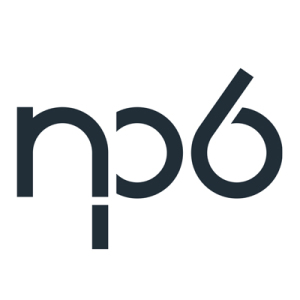ONE-TO-ONE MARKETING AUTOMATION 1/3
28 Jun 2016

Marketing communication through the email channel is an essential part of a brand’s communication with its clients. It enables to reach out large audiences for a minimal cost, to obtain easy measurements and objectives on each campaign’s KPI (most Email Service Provider offers free statistics on emailing campaigns) and to personalise the message content according to the target.
Despite these advantages, it is increasingly accepted that the golden age of emailing is over. Indeed, even if broadcasting costs are low, marketers aim at targeting their audience better in order to increase their campaign’s ROI. Moreover, inbox deliverability plays now a central role in the success of your campaigns; especially since MSPs (Mail Service Providers) have started to introduce spam filters using various anti-spam policies from the simplest (if a campaign generates x amount of complaints, block all emails) to most complex and individualised ones (target’s behaviour analysis, pressure marketing correlation…).
The new Golden age of email marketing?
The latest MSP policies could make us think that email as a media is declining, especially looking at a reduced audience and the rigid constraints imposed by MSPs. Truly, we must see this as an opportunity to send email marketing into a new Golden age. A more mature and modern age where undifferentiated mass broadcast will evolve into precise targeted campaigns allowing brands to personally address their customers. Conversing with them rather than talking to them. This is the paradigm of one-on-one email marketing.
Let’s look at what is the most important requirement of all email databases: the consent to receive commercial offers by email. The prospect must consciously activate consent; twice if possible (double opt-in). This enables you to have a highly qualified database which will be strongly responsive, easy to manage, and with few deliverability issues.

Re-think your segmentation
Moving to one-on-one marketing first requires to break your segmentation logic. Usually, the marketing manager will define prospect segments to broadcast the campaign to. These segments are often built on an intuitive socio-economical basis (a luxury perfume campaign will usually be addressed to women over forty), because it is simpler to define the product’s targets in these terms and because it is often the only data available.
Nonetheless, in practice we observe that segments are far from explaining the prospect’s responsiveness. Data scientists know this: the most predictive, in terms of positive response, comes from behavioural data rather than the profile’s personal data. The content may sometime meet different and transversal interests to the main population segments; and sometime depends on seasonality. It is not necessarily true that because we are a woman over 40 that we are evidently interested in luxury perfumes.
Breaking the segmentation logic enables to make the first step towards one-on-one marketing, transforming the following question “what group(s) of individuals could be interested in this campaign?” into “what are the individuals in my database that could be interested in this campaign right now? That way and for each campaign, we are going to look at who are the best prospects to engage with at this very moment. Instead of using large segmentations that are simply implemented, each campaign will have its own segment, its own targeting.
Moving to predictive marketing using algorithms
To succeed with this transition, it is necessary to obtain data of quality and to create algorithms that can work to predict prospects’ behaviours. Most companies have made enormous progress on the first point, more specifically through the implementation of performing CRM (Customer Relationship Management) which helps to identify clients/prospects of the brand (socio-demographic data, eventually enriched through open data), and more importantly what they do (purchase history, login history…). The more we break data silos the more complex data junctions become available to enrich profiles. Data scientists have to consolidate this data to build the most complete overview of a prospect.
Once this step is executed and automated, we can move on to predictions, also called “scoring” or “machine learning”. To achieve this, Data scientists’ well known mathematical algorithms will mine the data “to learn” about why an individual is more inclined to open or click a specific campaign.
This calls for advanced mathematical applications. But surprisingly, this is pure formality when the data structure has been properly implemented. The concept of “garbage-in/garbage-out” applies. As powerful as algorithms are, they do not make miracles and cannot see what is not present in the data. Reversely, the strength of algorithms is to be able to identify patterns if they exist. The major stake for Data Scientists is to collect entry data containing patterns to be able to find them. Data must be fixed, corrected, imputed when it’s missing and joint when it’s spread within the data ecosystem of the company. It will always be the biggest lever to improve predictions.

Predicting the propensity for an individual to react to a campaign
What do we usually find at the end of this process? Simply, we can discover the propensity for each individual to react to a campaign. Concretely, the algorithm would predict that individual A has an 86% propensity to react and individual B only has a 13% propensity to react. Each individual is becoming a segment with a more or less strong propensity.
If we decide to focus on individuals with more than a 70% propensity to react, we get a specific segment for that campaign. This segment will contain profiles that we would have intuitively never targeted, or at least not as precisely. These “new” profiles could also be “transversal” to the database in socio-demographic terms. Thus, our luxury perfume campaign will certainly be sent to women over 40; but also to younger ones who have manifested their interests in the past, and maybe to their husbands if we are approaching St Valentine’s or their partner’s birthday.
A true conversation with the prospect
The advantage of this approach is that another campaign, broadcast at a different time, will provide very different individual propensities. That way, we maintain a direct match with the prospect’s expectations who receives pertinent communications at the appropriate time. Therefore, we realise that the transition from a unique message destined to large audiences to a true conversation where the brand directly engages with each prospect on topics that interest them personally, will become tomorrow’s standard of a marketing channel finally arriving at maturity.
We have demonstrated that the arrival of predictive marketing in emailing breaks the segmentation logic because it is sometimes too simple when approaching prospects. It also breaks the ease of logistic management that segmentation used to offer (notably the marketing pressure management). In addition, it brings more new problems that need resolving to ensure these new approaches are truly successful. This will be addressed in our next contribution: “Prescriptive email marketing, the automated and optimised one-to-one”.
First published on the 5th of January 2016
This article is the first part of a series of 3 articles
Read Part 2
Cédric Hervet, Operational Research Director at SOCIO (NP6 Group)

Feel free to leave any comments ...
NP6 LTD
a leader in SaaS marketing